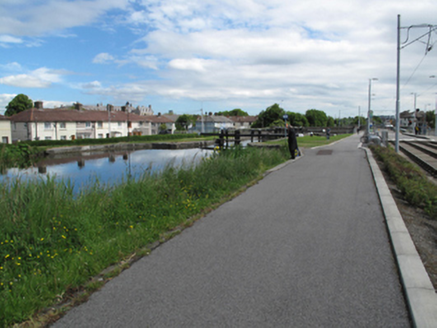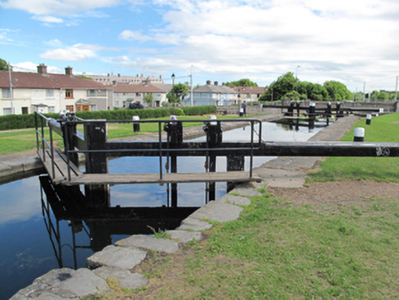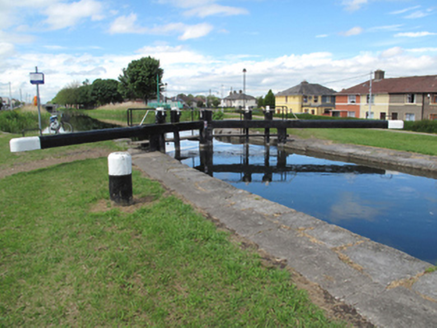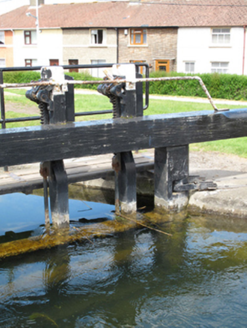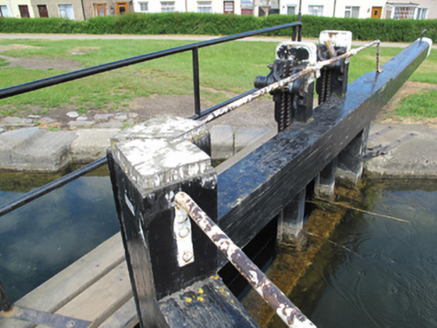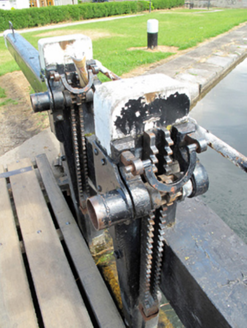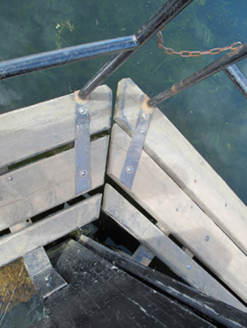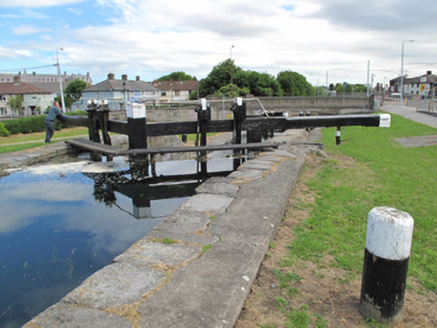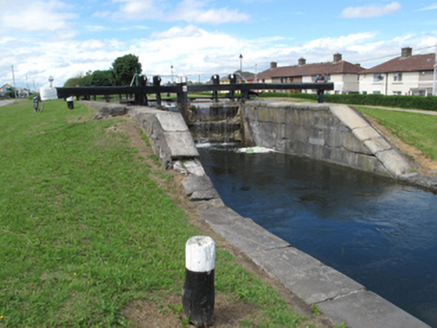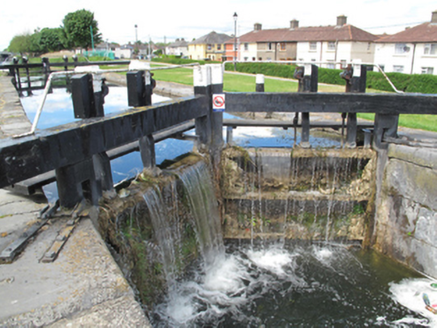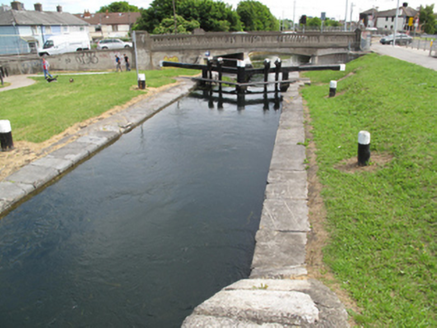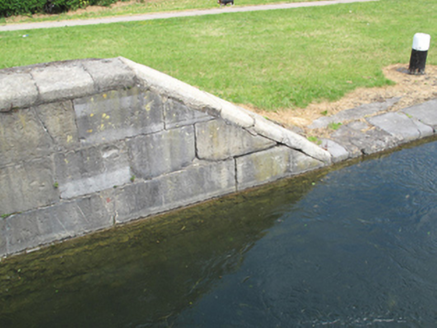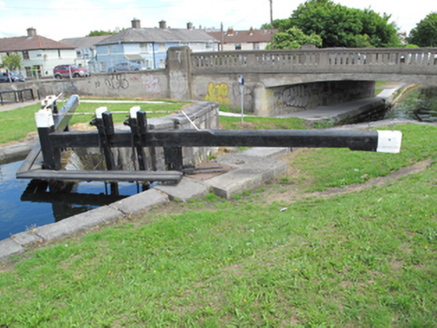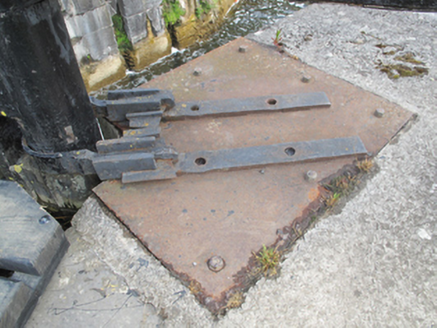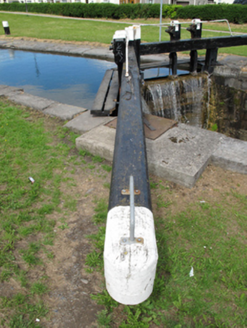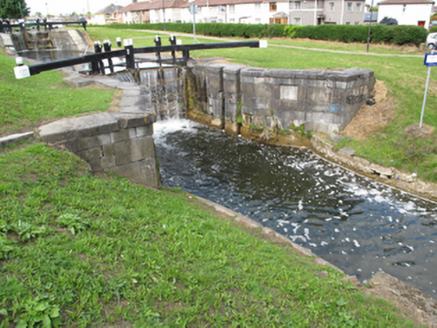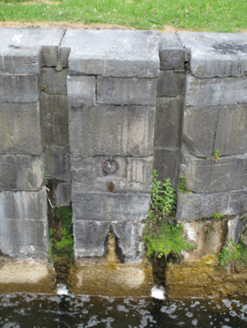Survey Data
Reg No
50080103
Rating
Regional
Categories of Special Interest
Architectural, Historical, Social, Technical
Original Use
Lock
In Use As
Lock
Date
1770 - 1780
Coordinates
312796, 233146
Date Recorded
12/06/2013
Date Updated
--/--/--
Description
Double chamber canal lock, built c.1775, consisting of three pairs of timber and steel mitre gates with timber footboards and balance beams, set within cut limestone lock chamber with limestone coping and splayed ends. Sloped parapet to level changes, upper level having render finish to outer parapet. Timber mooring bollards and cast-iron winding mechanisms to north and south tow-paths. Located at bend of canal, adjacent to Suir Road Bridge, Inchicore.
Appraisal
The First Lock forms part of the Grand Canal and is one of a group of locks in this area, designed to raise or lower boats between different water levels. The Grand Canal is the southernmost of a pair of canals that encircles Dublin city, and provides a waterway connection between Dublin's River Liffey and the River Shannon. This is one of the earlier locks built in Dublin city, as the canal originally terminated at the City Basin off James's Street, and the circular line was only completed in the 1790s. The foundation stone of this lock was laid on 15th of April 1773 by Earl Harcourt, Lord Lieutenant of Ireland, soon after the foundation of the Grand Canal Company to expedite construction of the canal. The quality of the limestone construction is indicative of the grandiose ambitions of the Grand Canal Company during the latter part of the eighteenth century. This lock has been designed and constructed with a high level of expertise, with two chambers, indicating the importance of its role in the past and it is an integral element of Dublin’s architectural and industrial heritage. Still in use today, it forms part of a group of related structures along the Grand Canal and serves as an important reminder of the heyday of the canal building era prior to the demise of this transport system in the mid-to-late nineteenth century with the arrival of the railway.
